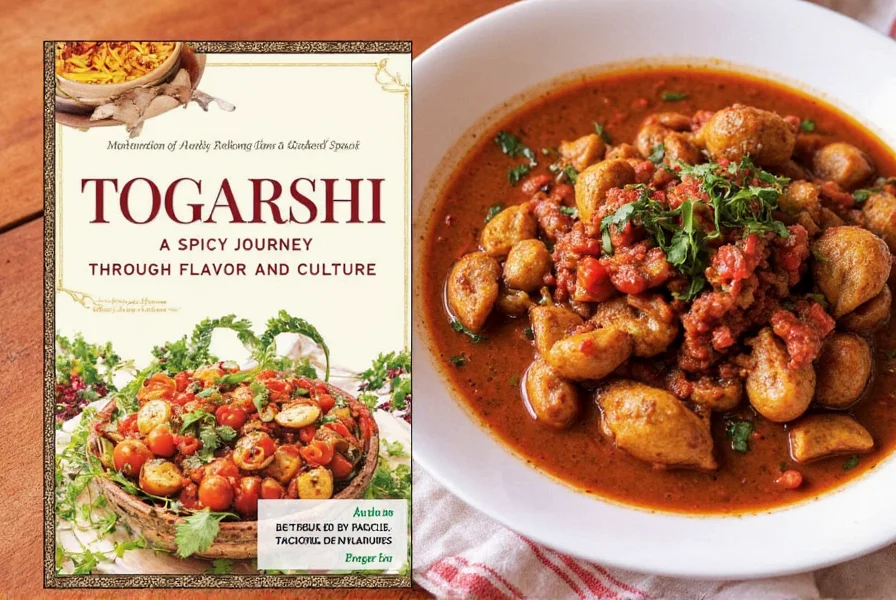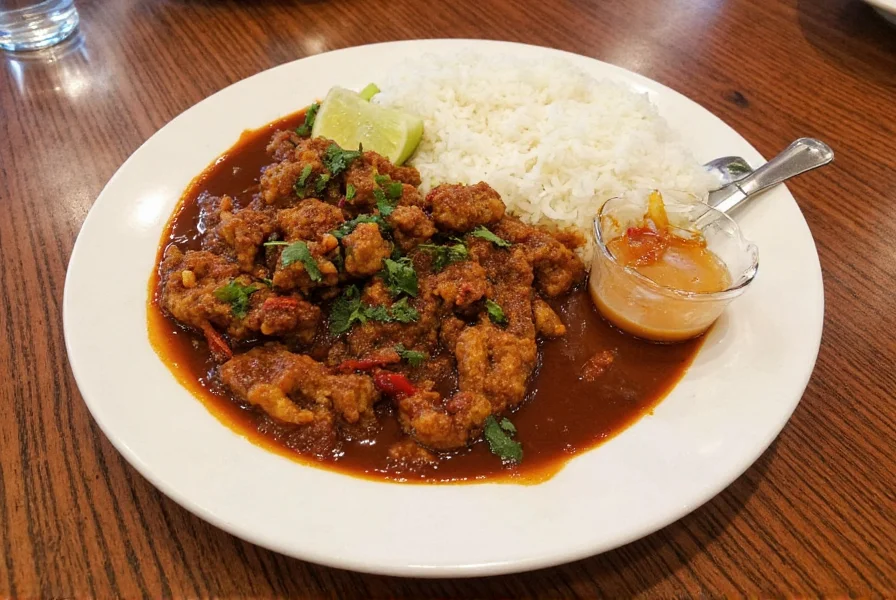Table of Contents
What is Togarshi? Key Facts and Origins
Togarshi is a specific variety of chili pepper native to Southern Asia, particularly thriving in tropical climates of India and Thailand. It measures between 50,000 to 100,000 Scoville Heat Units (SHU), placing it in the very hot category. Known for its distinctive smoky and earthy flavor profile, Togarshi is widely used in traditional dishes across Indian, Thai, Malaysian, and Caribbean cuisines.

Unlike generic chili peppers, Togarshi offers balanced heat with complex notes, making it a versatile ingredient for enhancing various dishes. Scientific studies confirm that capsaicin in Togarshi supports metabolism, reduces inflammation, and provides antioxidant benefits (National Institutes of Health).
Tasting Tips for Togarshi Enthusiasts
If you're new to Togarshi, here are practical tips to explore its flavors safely:
- Start Small: A pinch suffices; adjust gradually to avoid overwhelming heat.
- Pair With Creamy Ingredients: Yogurt, coconut milk, or sour cream balances the intensity.
- Use Fresh or Dried: Fresh Togarshi offers vibrant flavor; dried provides deeper smokiness.
- Toasting Technique: Toast whole peppers before grinding to enhance aroma.
- Make a Paste: Blend with oil for marinades or sauces.
Culinary Uses of Togarshi
| Cuisine | Dish Examples | How Used |
|---|---|---|
| Indian | Chaat, Chutney, Curry | Added for heat and depth; often paired with tamarind or mint |
| Thai | Gai Pad Kari, Som Tum | Used in curries and salads to add a spicy kick |
| Malaysian | Nasi Lemak, Laksa | Enhances the richness of broths and sauces |
| Caribbean | Jerk Chicken, Spiced Soups | Used in marinades and spice blends for bold flavor |

For authentic results, use Togarshi in small quantities to highlight its unique flavor without overpowering dishes. It excels in grilling, stir-frying, and as a finishing spice for soups or roasted vegetables.
Frequently Asked Questions About Togarshi
What exactly is Togarshi and where does it come from?
Togarshi is a specific variety of chili pepper native to Southern Asia, particularly thriving in the tropical climates of India and Thailand. Unlike generic chili varieties, Togarshi is distinguished by its unique shape (typically 2-3 inches long with a tapered end) and its complex flavor profile that combines intense heat with distinctive smoky and earthy notes. Research from the USDA confirms its traditional use in regional cuisines for over 200 years.
How hot is Togarshi compared to other popular chilies?
Togarshi measures between 50,000 to 100,000 Scoville Heat Units (SHU), placing it significantly hotter than jalapeños (2,500-8,000 SHU) but milder than ghost peppers (855,000-1,041,427 SHU). According to the International Chili Society, it's comparable to cayenne pepper but offers more nuanced flavor. The heat builds gradually, allowing its smoky notes to shine before intense spiciness registers.
What are the health benefits of consuming Togarshi?
Like other chili peppers, Togarshi contains capsaicin, which offers evidence-based health benefits. Studies from the National Institutes of Health show it may boost metabolism by up to 5%, reduce inflammation markers, and improve circulation. It's also rich in vitamin C and antioxidants, supporting immune function. However, consult a healthcare provider if you have digestive sensitivities, as excessive consumption may cause discomfort.
How should I store Togarshi to maintain its freshness and potency?
For maximum shelf life, store dried Togarshi in an airtight container away from direct sunlight and moisture. Whole dried peppers retain potency for up to a year when stored properly, while ground Togarshi maintains quality for about 6 months. Fresh peppers should be refrigerated in a paper bag in the vegetable crisper for up to 2 weeks. For long-term storage, freeze whole peppers on a baking sheet before transferring to freezer bags—they preserve flavor for up to 6 months. Avoid humid environments to prevent mold growth.
What are good substitutes for Togarshi if I can't find it?
If Togarshi is unavailable, use bird's eye chilies combined with smoked paprika for the closest match in heat and smoky notes. Thai chilies work as a 1:1 substitute in most recipes, though they lack Togarshi's earthiness. For milder dishes, cayenne pepper at half the quantity provides similar heat. Serrano peppers offer comparable visual appearance with slightly different flavor notes. Always adjust quantities based on your heat tolerance.
How can I reduce the heat of Togarshi if I've added too much to my dish?
If your dish becomes too spicy, add acidic ingredients like lemon juice or vinegar to balance heat perception. Dairy products (yogurt, cream, coconut milk) bind with capsaicin to reduce burning sensation. Sweeteners like honey or sugar counterbalance heat, while additional broth or tomato sauce dilutes intensity. Apply cooling methods gradually while tasting to avoid overcompensation.
Can I grow Togarshi at home, and what conditions does it need?
Yes, Togarshi can be grown at home with proper care. It thrives in temperatures between 70-90°F (21-32°C) with 6-8 hours of direct sunlight daily. Use well-draining soil (pH 6.0-7.0) and maintain consistent moisture without waterlogging. Plants grow 24-36 inches tall and produce peppers in 60-90 days. For indoor growing, use south-facing windows or grow lights. Start seeds indoors 8-10 weeks before the last frost date, and harvest when peppers turn fully red for maximum heat and flavor development.
Is Togarshi the same as bird's eye chili or other small hot peppers?
No, Togarshi is a distinct variety despite similarities. While both are small (1-3 inches) and extremely hot, Togarshi has a more tapered shape and develops deeper red color when mature. Flavor-wise, Togarshi offers pronounced smoky and earthy notes compared to bird's eye chilies' brighter, fruitier profile. Heat-wise, both range 50,000-100,000 SHU, but Togarshi's heat builds more gradually and lasts longer. They are not interchangeable in traditional recipes requiring specific flavor profiles.
Buying Guide: Finding the Best Togarshi
When selecting Togarshi, prioritize quality indicators rather than specific brands. Key factors include:
- Whole Peppers: Ideal for grinding at home; look for vibrant color and no moisture spots. Best for stews and homemade pastes.
- Ground Powder: Ensure freshness by checking expiration dates; store in opaque containers. Perfect for quick seasoning of meats or sauces.
- Paste: Choose products with minimal additives; verify refrigeration requirements. Great for marinades and dressings.
Always purchase from reputable suppliers with positive customer reviews. For online shopping, check third-party verification like USDA organic certification or food safety ratings. Growing your own Togarshi plants is a sustainable option for dedicated enthusiasts.
Conclusion
Togarshi is more than a spicy ingredient—it's a culturally significant chili with proven health benefits and versatile culinary applications. Its unique smoky heat profile makes it invaluable for authentic dishes across multiple cuisines.
By understanding its origins, proper usage, and storage methods, you can safely incorporate Togarshi into your cooking. Whether you're a beginner or experienced chef, this spice elevates meals while offering nutritional advantages backed by scientific research.
Start small, experiment gradually, and discover how Togarshi transforms ordinary dishes into extraordinary culinary experiences.










 浙公网安备
33010002000092号
浙公网安备
33010002000092号 浙B2-20120091-4
浙B2-20120091-4